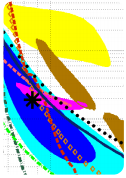CDMS Collaboration: R. Agnese, Z. Ahmed, A.J. Anderson, S. Arrenberg,
D. Balakishiyeva, R. Basu Thakur, D.A. Bauer, J. Billard, A. Borgland, D.
Brandt, P.L. Brink, T. Bruch, R. Bunker, B. Cabrera, D.O. Caldwell, D.G.
Cerdeno, H. Chagani, J. Cooley, B. Cornell, C.H. Crewdson, P. Cushman, M.
Daal, F. Dejongh, E. Do Couto E Silva, T. Doughty, L. Esteban, S.
Fallows, E.
Figueroa-Feliciano, J. Filippini, J. Fox, M. Fritts, G.L. Godfrey, S.R.
Golwala, J. Hall, R.H. Harris, S.A. Hertel, T. Hofer, D. Holmgren, L. Hsu,
M.E. Huber, A. Jastram, O. Kamaev, B. Kara, M.H. Kelsey, A. Kennedy, P. Kim,
M. Kiveni, K. Koch, M. Kos, S.W. Leman, B. Loer, E. Lopez Asamar, R.
Mahapatra, V. Mandic, C. Martinez, K.A. McCarthy, N. Mirabolfathi, R.A.
Moffatt, D.C. Moore, P. Nadeau, R.H. Nelson, K. Page, R. Partridge,
M. Pepin,
A. Phipps, K. Prasad, M. Pyle, H. Qiu, W. Rau, P. Redl, A. Reisetter, Y.
Ricci, T. Saab, B. Sadoulet, J. Sander, K. Schneck, R.W. Schnee, S. Scorza,
B. Serfass, B. Shank, D. Speller, K.M. Sundqvist, A.N. Villano, B. Welliver,
D.H. Wright, S. Yellin, J.J. Yen, J. Yoo, B.A. Young, and J. Zhang

![]()